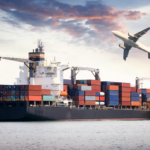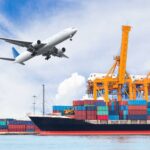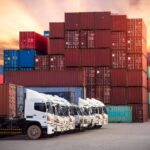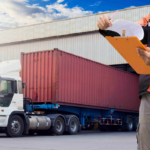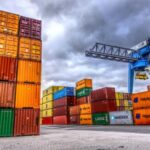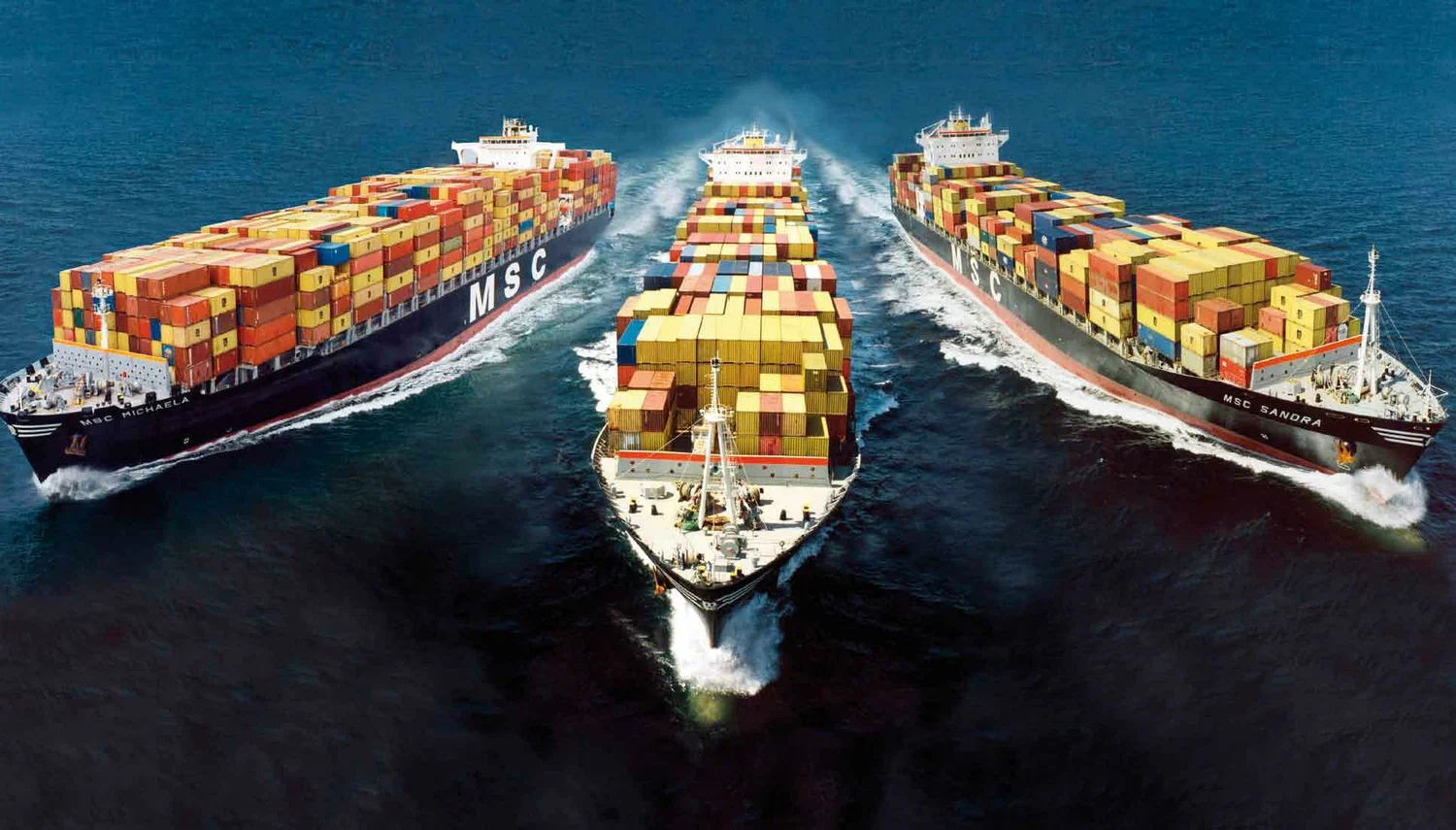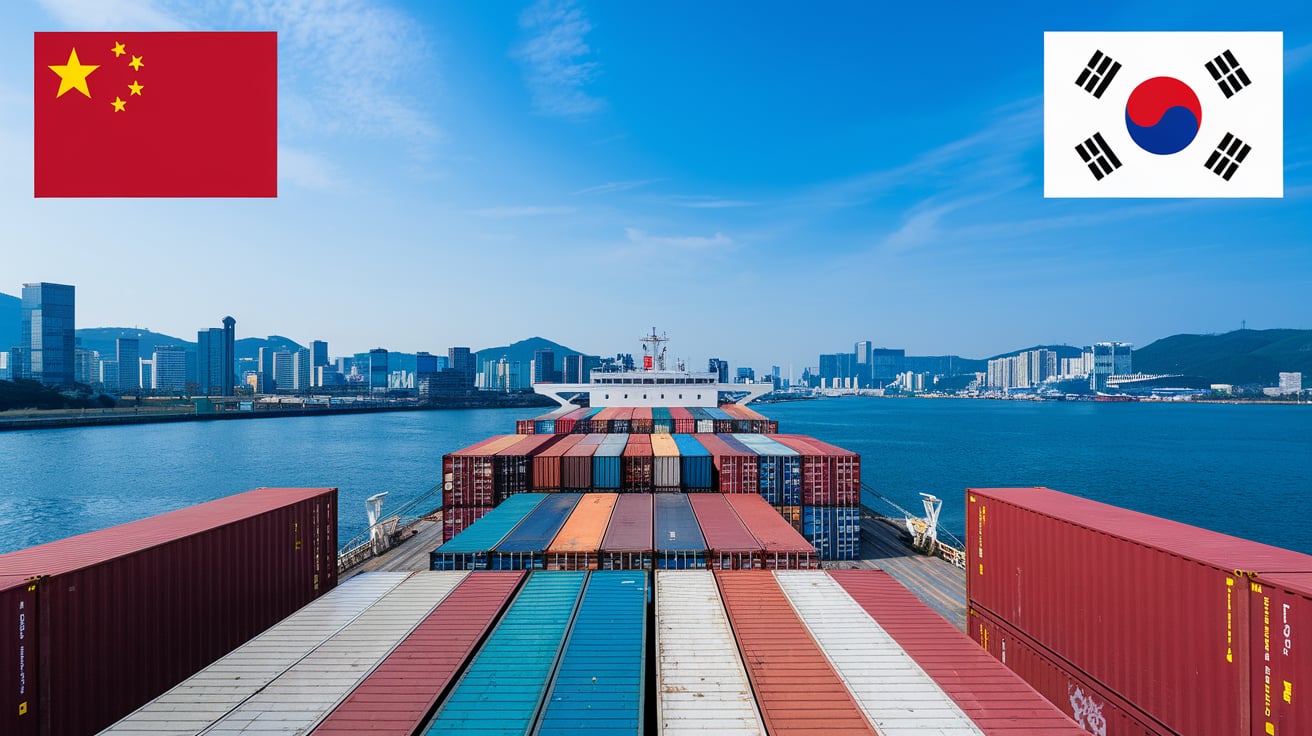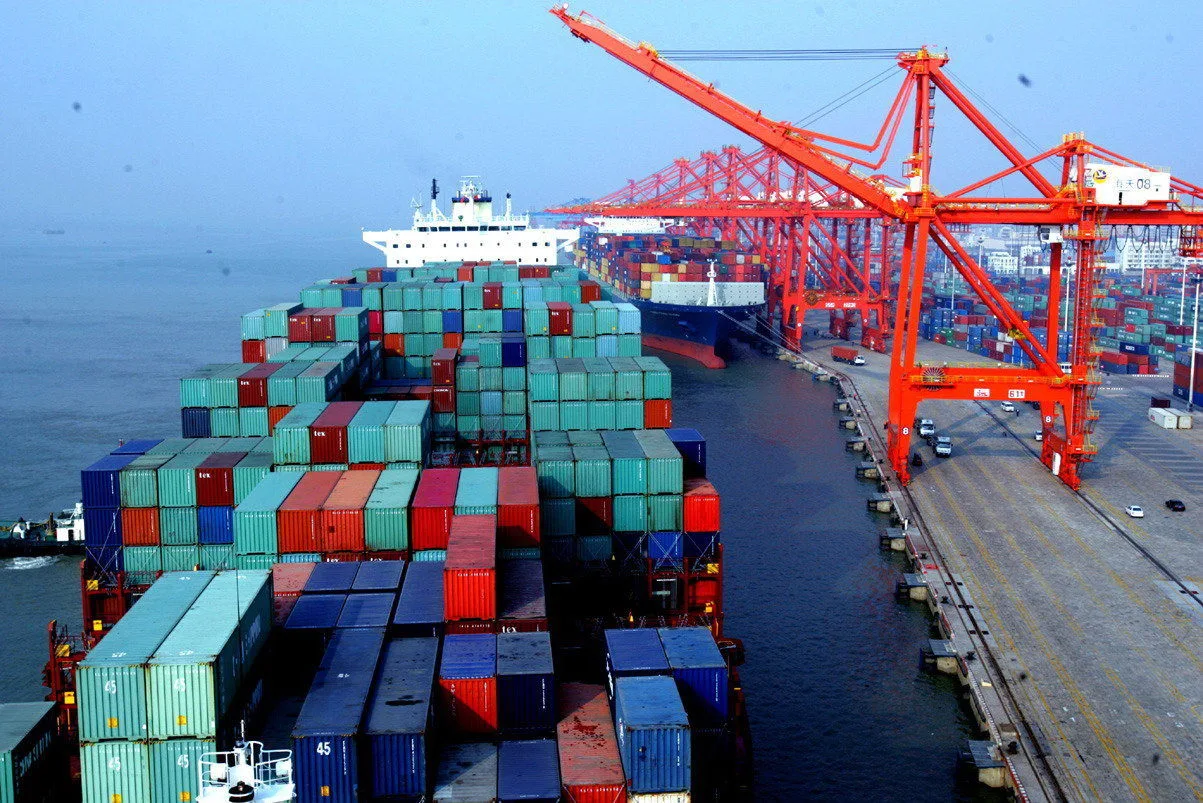Shipping hazardous materials, commonly known as Hazmat Freight Forwarding, is a complex yet vital aspect of international logistics. This specialized field involves the transportation of materials that pose risks to health, safety, and the environment, including chemicals, explosives, and flammable substances. With stringent regulations set by bodies such as the International Air Transport Association (IATA) and the International Maritime Organization (IMO), ensuring compliance is critical for any business involved in Hazmat shipping. In this guide, we will explore the intricacies of Hazmat shipping from China to Spain, including key considerations for transportation modes, packaging and labeling requirements, documentation processes, and the role of specialized freight forwarders in ensuring safe and compliant logistics.
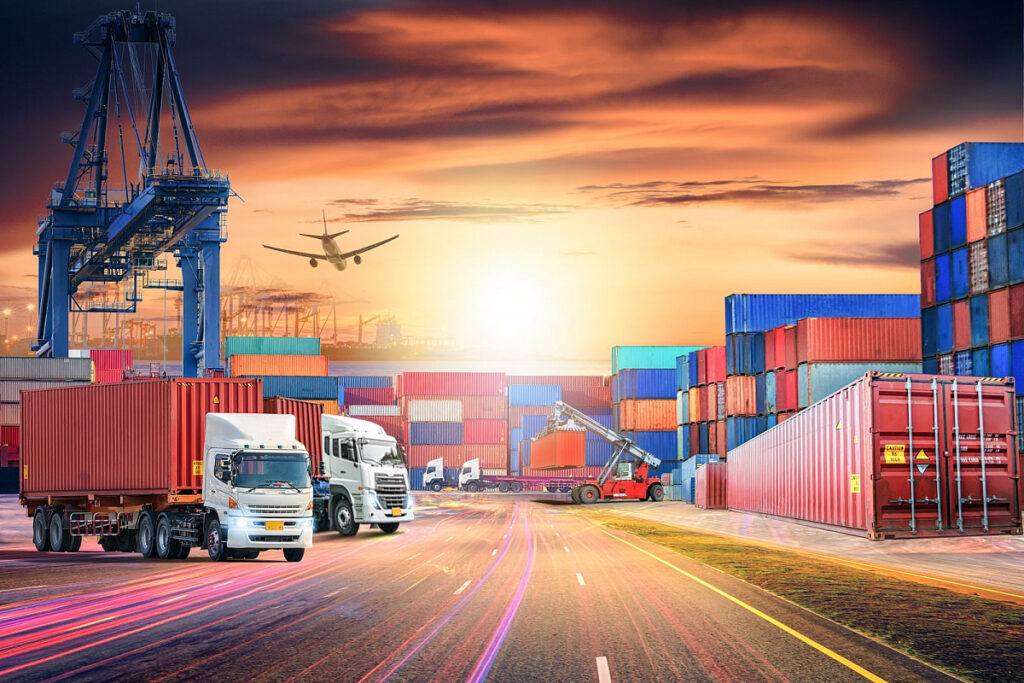
Understanding Hazmat Freight Forwarding
The complexities involved in Hazmat shipping demand specialized knowledge and expertise. Freight forwarders who handle Hazmat shipments must comply with stringent regulations, ensuring that the goods are transported safely and legally. This includes selecting appropriate transportation routes, employing trained personnel, and maintaining adherence to legal documentation requirements.
Importance of Choosing the Right Hazmat Freight Forwarder
Selecting the right Hazmat Freight Forwarder is critical for several reasons:
-
Regulatory Compliance: The transportation of hazardous materials is governed by various international, national, and local laws. A qualified forwarder will have in-depth knowledge of these regulations and ensure compliance, minimizing the risk of legal penalties and shipment delays.
-
Safety Measures: Hazmat materials can present significant risks if mishandled. Experienced forwarders implement rigorous safety protocols, including specialized training for personnel, appropriate vehicle selection, and risk assessment procedures, to mitigate these risks.
-
Insurance and Liability: Hazmat shipments carry unique liability considerations. A reputable freight forwarder will have appropriate insurance coverage and be able to advise on additional insurance options to protect against potential losses or incidents during transit.
-
Cost Efficiency: Choosing an experienced Hazmat freight forwarder can lead to cost savings through optimized shipping routes, efficient handling, and avoidance of fines related to non-compliance.
-
Expertise in Emergency Response: In the event of an incident or spill involving hazardous materials, a knowledgeable freight forwarder will have emergency response protocols in place, ensuring that effective action is taken swiftly to minimize damage and health risks.
Key Considerations for Hazmat Shipping from China to Spain
Choice of Transportation Modes (Sea, Air, Multimodal)
When shipping hazardous materials from China to Spain, the choice of transportation mode can significantly impact cost, time, and safety.
| Transportation Mode | Advantages | Disadvantages |
|---|---|---|
| Sea Freight | – Cost-effective for large volumes<br>- Suitable for bulk shipments<br>- Lower risk of theft or damage | – Longer transit times<br>- Requires careful packaging to withstand marine conditions |
| Air Freight | – Fast delivery times<br>- Ideal for urgent shipments<br>- Reduced risk of damage in transit | – Higher costs<br>- Limited cargo capacity for hazardous materials due to strict regulations |
| Multimodal | – Combines benefits of both sea and air<br>- Flexible route options<br>- Optimized for cost and timing | – Coordination complexities<br>- Requires specialized handling and documentation for each mode |
Considering these factors will help in determining the best mode of transportation for your specific Hazmat shipment needs.
Packaging and Labeling Requirements
Proper packaging and labeling are essential components of Hazmat shipping. These requirements ensure that hazardous materials are contained and identifiable throughout the shipping process, reducing the risk of accidents and ensuring compliance with regulations.
Key aspects include:
-
Packaging Materials: Use containers specifically designed for hazardous materials, such as UN-approved drums, boxes, or intermediate bulk containers (IBCs).
-
Labeling: Each package must display appropriate hazard symbols and labels in compliance with international standards. This includes information such as the proper shipping name, UN number, and handling instructions.
-
Documentation: Accompanying documents, such as the Safety Data Sheet (SDS), must be provided to inform handlers about the hazards involved.
Documentation and Declaration Processes
The documentation involved in Hazmat shipping is critical for regulatory compliance and safe transport. Essential documents include:
-
Dangerous Goods Declaration (DGD): This document must be completed and signed by the shipper, providing details about the nature of the hazardous materials, their classification, and handling instructions.
-
Waybill: Serves as a shipping contract between the shipper and carrier, outlining the terms of the shipment.
-
Customs Clearance Documents: Hazmat shipments require additional customs documentation to comply with both exporting and importing country regulations. This ensures that all duties and taxes are paid and that the shipment meets the safety standards of the destination country.
-
Insurance Documentation: Proof of insurance coverage is essential for protecting against potential liabilities during transit.
Engaging with a professional logistics provider like Dantful International Logistics can streamline these processes, ensuring compliance with all necessary regulations and offering customs clearance and insurance services tailored to your Hazmat shipping needs. By leveraging a highly professional, cost-effective, and high-quality logistics service, importers can navigate the complexities of Hazmat transportation with confidence.
Read More:
- Shipping From China To Netherlands
- Shipping From China To Spain
- Shipping From China To Germany
- Shipping From China To France
- Shipping From China to Italy
- Shipping From China To Poland
- Shipping From China to United Kingdom
Role of Specialized Hazmat Freight Forwarders
Expertise in Hazmat Regulations
Specialized Hazmat Freight Forwarders possess extensive knowledge of both international and domestic regulations surrounding the transportation of hazardous materials. This expertise is critical, as each type of hazardous material has specific handling and transportation requirements governed by organizations such as the International Air Transport Association (IATA) and the International Maritime Organization (IMO).
These forwarders are well-versed in the nuances of compliance, ensuring that shipments adhere to the latest regulatory standards. This includes not only understanding the classification of hazardous materials but also navigating complex legal frameworks, which vary by country. Their expertise enables them to advise clients on the appropriate packaging, labeling, and transport modes, helping to mitigate risks associated with non-compliance.
Risk Assessment and Mitigation
A fundamental responsibility of specialized Hazmat freight forwarders is conducting thorough risk assessments for hazardous shipments. This process involves identifying potential hazards associated with the materials being shipped, evaluating the likelihood of incidents, and implementing strategies to mitigate those risks.
Forwarders utilize techniques such as:
- Hazard Analysis: Assessing the physical and chemical properties of materials to understand risks during handling and transportation.
- Contingency Planning: Developing emergency response plans, including procedures to follow in the event of spills or accidents.
- Safety Protocols: Implementing stringent safety measures during loading, unloading, and transit to prevent incidents that could endanger personnel or the environment.
By focusing on risk assessment and mitigation, these freight forwarders play a crucial role in enhancing the safety of Hazmat shipments.
Proper Documentation Handling
Documentation is essential in Hazmat shipping, as it ensures regulatory compliance and provides critical information throughout the transport process. Specialized forwarders excel in managing the necessary paperwork, which typically includes:
- Dangerous Goods Declarations (DGD): Outlining the specifics of the hazardous materials being shipped, including their classification, quantity, and handling instructions.
- Compliance Certificates: Providing evidence that all regulations have been met, which may include international and regional standards.
- Customs Documentation: Ensuring all customs declarations are accurate and submitted in a timely manner to avoid delays and penalties.
By efficiently handling documentation, Hazmat freight forwarders minimize the risk of errors that could lead to shipment delays or legal complications.
Coordination with Carriers and Customs Authorities
Effective coordination with carriers and customs authorities is vital for the smooth transit of hazardous materials. Specialized Hazmat freight forwarders act as the pivotal link between shippers, transportation providers, and regulatory agencies.
Key aspects of this coordination include:
- Carrier Selection: Identifying and partnering with carriers that have the necessary equipment and experience for transporting hazardous materials safely.
- Communication: Maintaining open lines of communication with all parties involved to ensure that everyone is aware of the specific requirements and timelines for each shipment.
- Customs Clearance: Navigating the complexities of customs regulations and ensuring that all necessary approvals are obtained prior to shipment, thus expediting the overall process.
Through effective coordination, specialized freight forwarders help facilitate the efficient and compliant movement of hazardous materials, further reducing the potential for delays and complications.
Selecting the Right Freight Forwarder from China to Spain
Qualifications and Expertise
When selecting a freight forwarder for transporting goods, especially hazardous materials, assessing their qualifications and expertise is fundamental. Look for forwarders with:
- Certifications: Ensure the freight forwarder is certified by relevant authorities and organizations, such as the International Air Transport Association (IATA) for air shipments and the International Maritime Organization (IMO) for sea transport.
- Experience: Evaluate their history in handling hazardous materials and their understanding of the specific regulations that apply to shipments from China to Spain.
Service Scope and Network Coverage
The service scope of a freight forwarder encompasses the range of logistics services they provide. When selecting a freight forwarder, consider:
- Comprehensive Services: Determine whether they offer a full range of services, including customs clearance, insurance services, warehouse services, and shipping options tailored to your needs.
- Network Coverage: A well-established forwarder will have a strong network of carriers and agents, ensuring they can provide timely and efficient services whether shipping by air, sea, or multimodal.
Safety Record and Reputation
Finally, the safety record and reputation of a freight forwarder should be paramount in your decision-making process. Factors to consider include:
- Incident History: Investigate the forwarder’s track record concerning mishaps or failures in handling hazardous materials.
- Client Testimonials: Seek out reviews and testimonials from previous clients to gauge their satisfaction with the forwarder’s services.
Engaging a reputable freight forwarder can significantly reduce risks associated with shipping hazardous materials.
For those seeking a highly professional, cost-effective, and high-quality option, consider Dantful International Logistics. With extensive experience in hazardous material transportation, Dantful ensures compliance with all regulations while providing a comprehensive range of services tailored to your logistics needs. Our commitment to safety and efficiency makes them an ideal partner for your Hazmat freight forwarding requirements from China to Spain. By leveraging Dantful’s expertise, you can navigate the complexities of global shipping with confidence and ease.
Dantful International Logistics Services:
- Dantful Ocean Freight Services
- Air Freight From China
- Amazon FBA Freight Forwarding
- WAREHOUSE Services
- One-Stop Customs Clearance Solution
- Cargo Insurance Services in China
- DDP Shipping Services By Dantful Logistics
- Out of Gauge Cargo Transportation Shipping Services
Hazmat Transportation Process
Booking and Planning
The initial phase in the Hazmat transportation process involves careful booking and planning to ensure compliance and efficiency. This stage includes:
- Selecting the Right Freight Forwarder: Identifying a freight forwarder that specializes in hazardous materials and has a proven track record.
- Understanding Material Requirements: Determining the specific regulations applicable to the hazardous material being transported, including classification and handling requirements.
- Creating a Transportation Plan: Developing a comprehensive plan that outlines the route, transportation mode (air, sea, or multimodal), and estimated timelines, ensuring alignment with regulatory requirements and customer needs.
Accurate planning during this phase is crucial to facilitate a smooth transport experience and reduce the risk of delays or compliance issues.
Packaging and Labeling Inspection
Once booking is complete, the next step involves thorough packaging and labeling inspection. This process includes:
- Using Approved Packaging: Ensuring that all hazardous materials are packaged using UN-approved containers that meet the necessary strength and structural integrity requirements.
- Labeling Compliance: Verifying that all packages are correctly labeled according to international standards, displaying hazard symbols, proper shipping names, UN numbers, and handling instructions.
- Inspection Procedures: Conducting inspections to confirm that the packaging meets regulatory standards and is free from damage. Any discrepancies should be addressed before shipment.
Proper packaging and labeling are vital in preventing incidents during transit and ensuring compliance with local and international regulations.
Customs Clearance
Customs clearance is a critical step in the Hazmat transportation process. This involves:
- Documentation Preparation: Compiling all necessary customs documents, including the Dangerous Goods Declaration (DGD), waybill, and any additional regulatory compliance certificates.
- Compliance with Customs Regulations: Ensuring that all documentation meets the specific requirements of both the exporting and importing countries to facilitate smooth customs processes.
- Working with Customs Authorities: Coordinating with customs officials to provide any additional information or documentation they may require, thus reducing the risk of delays at borders.
Successful customs clearance is essential in preventing shipment interruptions and ensuring timely delivery.
Transportation and Tracking
After customs clearance, the shipment is ready for transportation. During this phase:
- Choosing the Right Carrier: Selecting a carrier that is experienced in handling hazardous materials and equipped with the necessary safety features.
- Real-Time Tracking: Utilizing tracking technology to monitor the shipment’s progress, providing both the shipper and recipient with updates on the shipment’s location and estimated time of arrival.
- Coordination During Transit: Maintaining clear communication with all parties involved, including the freight forwarder, carrier, and customs authorities, to address any issues that may arise during transportation.
By ensuring effective transportation and tracking, companies can improve efficiency and maintain transparency throughout the shipping process.
Destination Delivery
The final stage of the Hazmat transportation process is destination delivery, which includes:
- Delivery Coordination: Confirming that delivery arrangements are in place at the destination, including any special requirements for handling hazardous materials.
- Final Inspection: Conducting an inspection upon delivery to ensure that the shipment arrived in good condition and that all packaging remains intact.
- Documentation Submission: Providing the recipient with all necessary documentation, including delivery receipts and any required regulatory paperwork.
Effective management of the destination delivery phase ensures that hazardous materials are safely received and comply with local regulations.
Common Challenges and Solutions
Regulatory Compliance
Regulatory compliance is a significant challenge in Hazmat transportation, given the variety of laws that govern hazardous materials. To address compliance issues:
- Stay Updated: Freight forwarders should continuously monitor changes in regulations at the national and international levels to ensure compliance.
- Utilize Technology: Implementing compliance management software can help track regulatory requirements and facilitate timely updates.
By proactively managing compliance, companies can minimize the risk of penalties and shipping delays.
Safety Management
Ensuring safety during Hazmat transportation is paramount, as the materials involved can pose serious risks. Addressing safety management involves:
- Training Personnel: Providing thorough training for all personnel involved in handling hazardous materials, including shippers, carriers, and logistics staff.
- Establishing Safety Protocols: Developing and enforcing rigorous safety protocols that outline procedures for loading, unloading, and responding to emergencies.
Effective safety management practices help to prevent accidents and ensure the well-being of personnel and the environment.
Cost Control
Controlling costs associated with Hazmat transportation can present challenges due to the specialized nature of the services required. Solutions include:
- Optimize Routes: Freight forwarders can leverage data analytics to identify the most cost-effective shipping routes while maintaining compliance and safety.
- Negotiate Contracts: Establishing long-term partnerships with carriers and suppliers can lead to better pricing agreements and reduced overall costs.
By focusing on cost control measures, businesses can enhance their competitiveness while ensuring compliance and safety in Hazmat transportation.
Overall, the complexities of Hazmat transportation require careful planning, adherence to regulations, and a focus on safety. Engaging a professional logistics provider like Dantful International Logistics can streamline these processes, ensuring compliance and efficient service delivery tailored to your Hazmat shipping needs.
FAQs
1. What is Hazmat Freight Forwarding?
Hazmat Freight Forwarding involves the transportation of hazardous materials that pose risks to health, safety, and the environment. It requires specialized knowledge to comply with regulations set by organizations like the IATA and IMO.
2. Why is it important to choose a specialized Hazmat Freight Forwarder?
Selecting a specialized Hazmat Freight Forwarder is crucial for regulatory compliance, safety measures, insurance protection, cost efficiency, and emergency response expertise.
3. What transportation modes are available for Hazmat shipping from China to Spain?
The primary transportation modes include:
- Sea Freight: Cost-effective, but with longer transit times.
- Air Freight: Faster delivery, but higher costs and capacity limitations.
- Multimodal Shipping: Combines benefits of both sea and air, but may involve coordination complexities.
4. What are the packaging and labeling requirements for Hazmat shipping?
Proper packaging and labeling are essential for compliance and safety. This includes using UN-approved containers, displaying hazard symbols, and providing documentation like the Safety Data Sheet (SDS).
5. What documentation is required for Hazmat shipping?
Key documents include:
- Dangerous Goods Declaration (DGD)
- Waybill
- Customs Clearance Documents
- Insurance Documentation
6. How do I ensure compliance during the Hazmat shipping process?
Engage with a professional logistics provider, stay updated on regulatory changes, and utilize compliance management software to ensure all documentation and safety protocols are followed.
7. What are the common challenges in Hazmat transportation?
Challenges include regulatory compliance, safety management, and cost control. Solutions involve continuous training, establishing safety protocols, and optimizing shipping routes.

Young Chiu is a seasoned logistics expert with over 15 years of experience in international freight forwarding and supply chain management. As CEO of Dantful International Logistics, Young is dedicated to providing valuable insights and practical advice to businesses navigating the complexities of global shipping.
The other language versions of this article
- الدليل الشامل لشركة شحن المواد الخطرة من الصين إلى إسبانيا
- De ultieme gids voor Hazmat Freight Forwarder van China naar Spanje
- Le guide ultime du transitaire de matières dangereuses de la Chine vers l’Espagne
- Der ultimative Leitfaden für den Gefahrguttransport von China nach Spanien
- La guida definitiva allo spedizioniere di merci pericolose dalla Cina alla Spagna
- La guía definitiva para el transporte de materiales peligrosos desde China a España
- O guia definitivo para o despachante de cargas Hazmat da China para a Espanha
- Полное руководство по экспедированию опасных грузов из Китая в Испанию
- Çin’den İspanya’ya Tehlikeli Madde Taşımacılığı İçin Nihai Kılavuz




